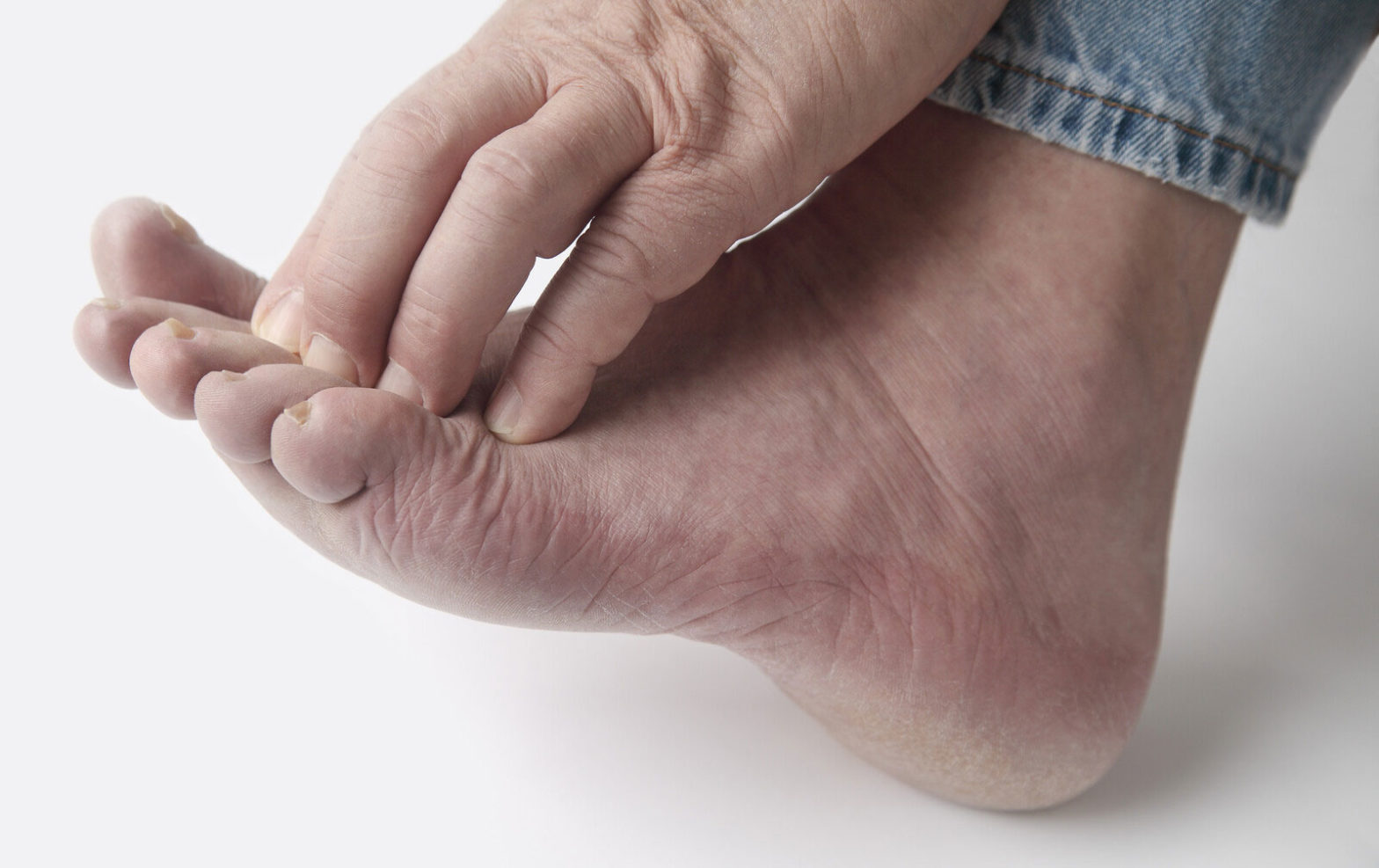In general, the term ‘neuropathy’ refers to nerve damage or anything that injures or impairs the nerves. Symptoms of neuropathy, which depend on which nerves are affected, include numbness, pain, and balance issues. Based on the type and location of the nerves affected, neuropathy is classified into four types: peripheral, cranial, autonomic and focal. Left untreated, neuropathy can lead to severe pain and serious complications. As it can cause foot problems, peripheral neuropathy is one of the most common conditions podiatrists treat. Outsourced podiatry billing is a feasible option when it comes to efficient claims submission.
Neuropathy can be hereditary or acquired. Let’s take a look into the common types of acquired neuropathy and their causes.
1. Peripheral neuropathy
Peripheral neuropathy refers to nerve damage that impairs muscular movement by affecting the way the body’s nerves send signals to the arms and legs. According to the National Institute of Diabetes and Digestive and Kidney Diseases, about one-third to one-half of people with diabetes has peripheral neuropathy. Diabetic peripheral neuropathy affects the longest nerve fibers first. Depending on the extent of nerve damage, the sensory loss can be only in the toes, extend over the feet, or spread over the lower legs or above the knees.
Factors responsible for acquired peripheral neuropathy include trauma, elevated blood sugar levels, autoimmune diseases, protein abnormalities, certain medications, exposure to toxic chemicals, vascular diseases, vitamin deficiencies, and excessive use of alcohol. Diabetes is the most common systemic disease associated with peripheral neuropathy. The condition can damage the autonomic, motor and sensory nerves. In some cases, the causes of peripheral neuropathy remain unknown even with extensive evaluation, and this condition is known as idiopathic neuropathy.
2. Cranial neuropathy
Cranial neuropathies are caused by damage to one or more cranial nerves or the nerves that arise directly from the brain and affect movement and feeling in the eyes and face. Cranial neuropathies can affect the sensory nerves more than motor nerves. Optic neuropathy affects the eyes, while auditory neuropathy affects hearing. The general symptoms of cranial neuropathy include pain, a tingling sensation, numbness, skin that feels sensitive to the touch, and weak or paralyzed muscles.
There are different types of cranial neuropathies such as Bell’s palsy, microvascular cranial nerve palsy, and third, fourth and sixth nerve palsies. Bell’s palsy causes weakness or partial paralysis of the muscles on one side of the face. Microvascular cranial nerve palsy causes double vision, blurring, drooping eyelids, and pain around the eyes. Multiple cranial neuropathies occur when several nerves are affected.
The causes of cranial neuropathy include: poorly controlled diabetes or high blood pressure, strokes, infections, brain tumors, head trauma, and infections.
3. Autonomic neuropathy (AN)
Autonomic neuropathy refers to damage of the nerves that control involuntary bodily functions. The nerve damage interrupts the messages sent between the brain and other organs. The condition can affect blood pressure, digestion, temperature control, bowel and bladder function, and sexual function.
While many health conditions can lead to this neuropathy type, common causes include diabetes, amyloidosis or abnormal protein build up in organs, alcoholism, and use of certain medications, infectious diseases and degenerative disorders. Older people and those with high blood pressure, high cholesterol and those who are overweight have an increased risk of AN.
4. Focal neuropathy
Less common than peripheral or autonomic neuropathy, focal neuropathy involves damage to single nerves, usually in the head, torso, or leg. The condition can cause muscle weakness or pain. Entrapments are the most common type of focal neuropathy, and occur when nerves become compressed or trapped in narrow passages between bones and tissues. Carpal tunnel syndrome is the most common entrapment neuropathy.
Typical symptoms of focal neuropathy include double vision, eye pain, paralysis on one side of the face, severe pain areas such as the lower back or leg(s), and chest or belly pain that is sometimes mistaken for heart attack or appendicitis. The major causes of focal neuropathy are high blood sugar levels, and high levels of fats, such as triglycerides in the blood.
ICD-10 Codes for Neuropathy
Diagnostic strategies for neuropathy include physical exam, medical history, neurological examination, and blood tests, imaging and nerve function tests, and nerve and skin biopsies. Here are some ICD-10 codes related to neuropathy that physicians can use to report the condition:
- G62.0 Drug-induced polyneuropathy
- G62.1 Alcoholic polyneuropathy
- G62.2 Polyneuropathy due to other toxic agents
- G62.9 Polyneuropathy, unspecified
- G90.09 Other idiopathic peripheral autonomic neuropathy
- E11.40 Type 2 diabetes mellitus with diabetic neuropathy, unspecified
- E11.41 Type 2 diabetes mellitus with diabetic mononeuropathy
- E11.42 Type 2 diabetes mellitus with diabetic polyneuropathy
- E11.43 Type 2 diabetes mellitus with diabetic autonomic (poly)neuropathy
- E11.49 Type 2 diabetes mellitus with other diabetic neurological complication
- E13.4 Other specified diabetes mellitus with neurological complications
- E13.40 Other specified diabetes mellitus with diabetic neuropathy, unspecified
- E13.41 Other specified diabetes mellitus with diabetic mononeuropathy
- E13.42 Other specified diabetes mellitus with diabetic polyneuropathy
- E13.43 Other specified diabetes mellitus with diabetic autonomic (poly)neuropathy
- E13.44 Other specified diabetes mellitus with diabetic amyotrophy
- E13.49 Other specified diabetes mellitus with other diabetic neurological complication
Treatment of neuropathy is focused on relieving pain and other symptoms by addressing the underlying causes of the condition, such as diabetes or infections. Treatment modalities include medications and various therapies such as vitamin therapy, transcutaneous electrical nerve stimulation (TENS), physical therapy, orthotics, and so on. Treatment options recommended would depend on the type of nerve damage, symptoms, and location.
A basic understanding of nervous system is crucial for coders to determine which codes represent the documented conditions. Partnering with a podiatry billing company will help podiatrists submit their timely and accurate claims for optimal reimbursement.
